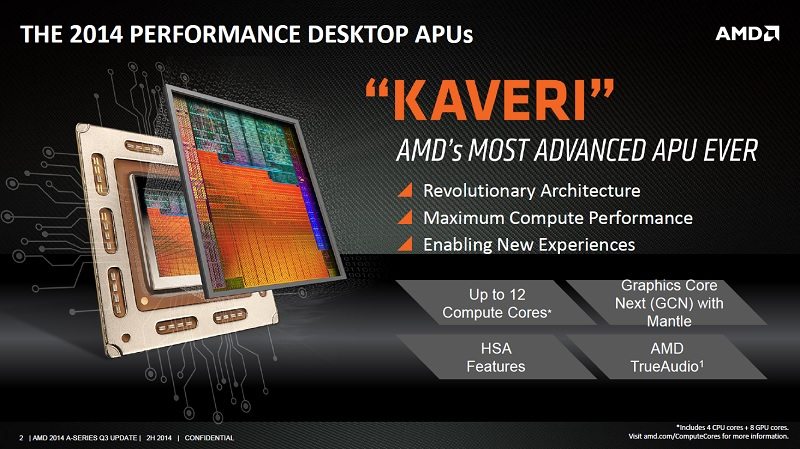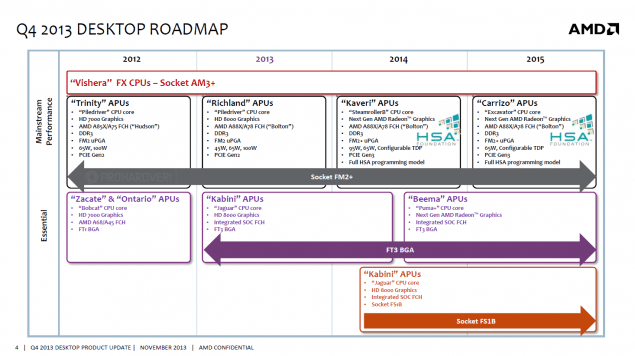Rumour: AMD “Carrizo” Desktop APUs Delayed, Kaveri Refresh To Fill The Gap
Ryan Martin / 10 years ago

We’ve heard a lot about AMD’s Next-Generation desktop APU platform, codename Carrizo. Last year we heard that the expected arrival date was to be 2015, and up until now we thought this was still on-track especially when details about the A10-8890K APU were released that showed support for a new FM3 socket. New rumours suggest Carrizo may now be delayed for the desktop platform – although the reasons are not entirely clear. AMD will not release Carrizo desktop APUs until 2016 and instead they will refresh the Kaveri product stack to bring out the 5th generation of APUs based on that. Carrizo will still arrive in 2015 in its mobile form according to the source, but there’s no sight of the desktop variant. That’s strange given the roadmap below that leaked from AMD suggesting Carrizo was to be released in 2015.

If the rumour is true Carrizo could now be the 6th generation of AMD APU, not the 5th as that title might get taken by Kaveri refresh. That means like with the Trinity to Richland transition the new Kaveri Refresh parts will be based on virtually identical physical components except they will get speed bumps and some performance and power optimisations. From my perspective this seems like a prudent financial decision being made by AMD: they need another generation of Kaveri APUs to fully profit from all the R&D that went into Kaveri, it also buys them some more time to tweak and tune Carrizo to make that release as competent as possible.
Based on current rumours we think that AMD’s Carrizo will bring a new socket to the table: possibly FM3 or FM3+, but will also retain backwards compatibility with FM2+. It should also introduce a new CPU architecture, possibly based on the Excavator design. It may bring DDR4 support too since DDR4 will be commercially viable from September 2014 when Intel introduces X99, Intel should also introduce DDR4 to its mainstream platforms next year. The other possibility is that Carrizo may opt for stacked-DRAM and DDR3 in order to keep costs down.
Source: Bits and Chips (IT) and WCCFTech
Image courtesy of AMD



















